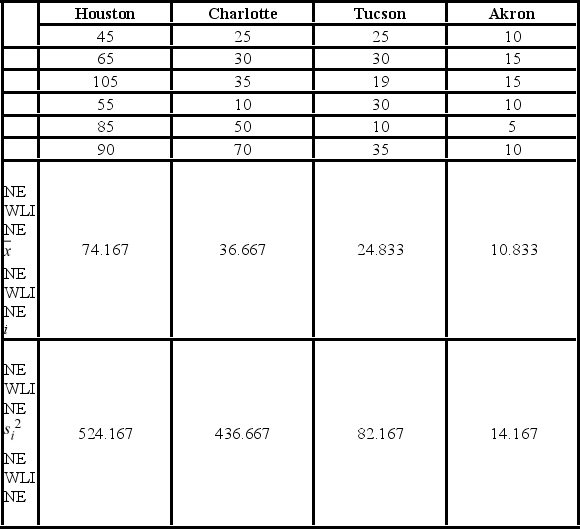Short Answer
A researcher with the Ministry of Transportation is commissioned to study the drive times to work (one-way) for U.S. cities. The underlying hypothesis is that average commute times are different across cities. To test the hypothesis, the researcher randomly selects six people from each of the four cities and records their one-way commute times to work. Refer to the below data on one-way commute times (in minutes) to work. Note that the grand mean is 36.625. 
The competing hypotheses about the mean commute times are ________.
A) H0: ?1 = ?2 = ?3, HA: Not all population means are equal
B) H0: Not all population means are equal, HA: ?1 = ?2 = ?3
C) H0: ?1 = ?2 = ?3 = ?4, HA: Not all population means are equal
D) H0: Not all population means are equal, HA: ?1 = ?2 = ?3 = ?4
Correct Answer:

Verified
Correct Answer:
Verified
Q50: Which of the following is the Fisher's
Q51: The between-treatments variance is based on a
Q52: Psychology students want to determine if there
Q53: A market researcher is studying the spending
Q54: A researcher wants to understand how an
Q56: The ANOVA test performed for determined that
Q57: Tukey's 100(1 − α)% confidence interval for
Q58: If the units within each block are
Q59: One of the disadvantages of Fisher's LSD
Q60: Consider the partially completed two-way ANOVA (without